Volume 3 | Number 1 | May 2011
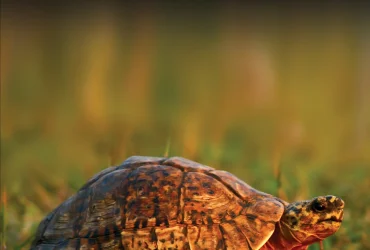 v3i1.46
v3i1.46ISSN: 1800-427X (print)
eISSN: 1800-427X (online)
DOI:10.47605/tapro.v3i1.46
Submitted date: 24 May 2011
Published date: 30 July 2011
Pp. 49.
Letter to Editor : RESPONSE TO WARAKAGODA AND
SIRIVARDANA, 2009
S.W. Kotagama*, Rex I. De Silva, A.S. Wijayasinha & V. Abeygunawardana
*Corresponding author. E-mail: fogsl@slt.lk
We respond to the article by Deepal Warakagoda and Udaya Sirivardana entitled “The Avifauna of Sri Lanka: An Overview of the Current Status” (2009). In an appendix to this article the writers make several critical comments on the “Avifaunal List of Sri Lanka”, authored by us. Warakagoda and Sirivardana contend that many species are included in our publication “Which had not been accepted by the CBCRRC [Ceylon Bird Club Records and Rarities Committee], and reports whose contents fall short of the level of authenticity required by a standard rarities committee”. It goes on to say that “A clearly inadequate criterion is used for accepting sight records of rare migrants”.
eISSN: 1800-427X (online)
DOI:10.47605/tapro.v3i1.46
Submitted date: 24 May 2011
Published date: 30 July 2011
Pp. 49.
Letter to Editor : RESPONSE TO WARAKAGODA AND
SIRIVARDANA, 2009
S.W. Kotagama*, Rex I. De Silva, A.S. Wijayasinha & V. Abeygunawardana
*Corresponding author. E-mail: fogsl@slt.lk
We respond to the article by Deepal Warakagoda and Udaya Sirivardana entitled “The Avifauna of Sri Lanka: An Overview of the Current Status” (2009). In an appendix to this article the writers make several critical comments on the “Avifaunal List of Sri Lanka”, authored by us. Warakagoda and Sirivardana contend that many species are included in our publication “Which had not been accepted by the CBCRRC [Ceylon Bird Club Records and Rarities Committee], and reports whose contents fall short of the level of authenticity required by a standard rarities committee”. It goes on to say that “A clearly inadequate criterion is used for accepting sight records of rare migrants”.
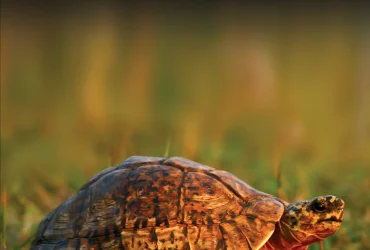 v3i1.45
v3i1.45ISSN: 1800-427X (print)
eISSN: 1800-427X (online)
DOI:10.47605/tapro.v3i1.45
Submitted date: 20 July 2011
Accepted date: 27 July 2011
Published date: 30 July 2011
Pp. 47–48.
Red morph of silvered lutung (Trachypithecus cristatus) rediscovered in Borneo, Malaysia
Lee E. Harding*
*E-mail: harding@sciwrite.ca
The red morph of Silvered Lutung (Trachypithecus cristatus) a leaf monkey that reportedly occurs or occurred in northeast Borneo, has heretofore been more mythological than real. As far as I can discover, the red morph was only actually observed and reported once, by Allen & Coolidge Jr. (1940). They recorded that seven out of fifteen adult males, but only three out of twenty-six adult females collected at Abai, were reddish. Abai is 47 miles/76 km from the mouth of the Kinabatangan River. This observation was repeated by others. Payne et al. (1985), who lived in Sabah, wrote that the red form occurs at the mouth of the Kinabatangan River.
Section Editor: Colin Groves
eISSN: 1800-427X (online)
DOI:10.47605/tapro.v3i1.45
Submitted date: 20 July 2011
Accepted date: 27 July 2011
Published date: 30 July 2011
Pp. 47–48.
Red morph of silvered lutung (Trachypithecus cristatus) rediscovered in Borneo, Malaysia
Lee E. Harding*
*E-mail: harding@sciwrite.ca
The red morph of Silvered Lutung (Trachypithecus cristatus) a leaf monkey that reportedly occurs or occurred in northeast Borneo, has heretofore been more mythological than real. As far as I can discover, the red morph was only actually observed and reported once, by Allen & Coolidge Jr. (1940). They recorded that seven out of fifteen adult males, but only three out of twenty-six adult females collected at Abai, were reddish. Abai is 47 miles/76 km from the mouth of the Kinabatangan River. This observation was repeated by others. Payne et al. (1985), who lived in Sabah, wrote that the red form occurs at the mouth of the Kinabatangan River.
Section Editor: Colin Groves
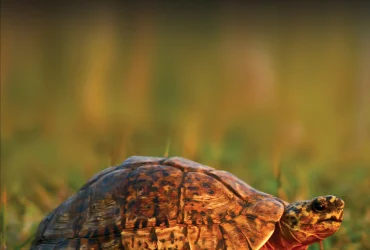 v3i1.44
v3i1.44ISSN: 1800-427X (print)
eISSN: 1800-427X (online)
DOI:10.47605/tapro.v3i1.44
Submitted date: 29 December 2010
Accepted date: 29 June 2011
Published date: 30 July 2011
Pp. 44–46.
Two rare butterfly species observed from two isolated forest patches in Kalutara District, Sri Lanka
D.M.S.S. Karunarathna*, R.G.A.T.S. Wickramarachchi, D.H.P.U. Silva & U.T.I. Abeywardena
*Corresponding author. E-mail: dmsameera@gmail.com
Butterflies are a group of charismatic insects, which forms a major component of Sri Lankan biodiversity. The total butterfly species recorded in Sri Lanka consists of 244 species and among them 20 (8.1%) are endemic to the island. Overall, 22 butterfly species are critically endangered, 29 endangered and 15 vulnerable and insufficient data are available for rating the status of 29 species. The distribution and ecology of butterflies, as well as of other insects, has been underestimated or neglected over the last few decades in Sri Lanka. Here we extend the distribution of two endangered butterflies in Sri Lanka.
Section Editor: Jeffrey Miller
eISSN: 1800-427X (online)
DOI:10.47605/tapro.v3i1.44
Submitted date: 29 December 2010
Accepted date: 29 June 2011
Published date: 30 July 2011
Pp. 44–46.
Two rare butterfly species observed from two isolated forest patches in Kalutara District, Sri Lanka
D.M.S.S. Karunarathna*, R.G.A.T.S. Wickramarachchi, D.H.P.U. Silva & U.T.I. Abeywardena
*Corresponding author. E-mail: dmsameera@gmail.com
Butterflies are a group of charismatic insects, which forms a major component of Sri Lankan biodiversity. The total butterfly species recorded in Sri Lanka consists of 244 species and among them 20 (8.1%) are endemic to the island. Overall, 22 butterfly species are critically endangered, 29 endangered and 15 vulnerable and insufficient data are available for rating the status of 29 species. The distribution and ecology of butterflies, as well as of other insects, has been underestimated or neglected over the last few decades in Sri Lanka. Here we extend the distribution of two endangered butterflies in Sri Lanka.
Section Editor: Jeffrey Miller
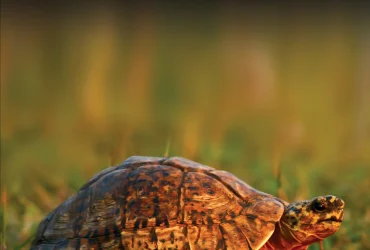 v3i1.43
v3i1.43ISSN: 1800-427X (print)
eISSN: 1800-427X (online)
DOI:10.47605/tapro.v3i1.43
Submitted date: 16 May 2011
Accepted date: 24 June 2011
Published date: 30 July 2011
Pp. 42–43.
Additions to black mildews of India
V.B. Hosagoudar*, Jacob Thomas & D.K. Agarwal
*Corresponding author. E-mail: vbhosagoudar@rediffmail.com
Kerala is located in the south-west corner of peninsular India and towards the western side of the southern Western Ghats, harbouring rich vegetation. It is a treasure of biological wealth and it needs the specialized personalities to identify and name them. Senior author is being engaged in the study of this never completing treasure of microfungal wealth of Kerala state since three decades. This paper gives an account of four taxa, hitherto unrecorded from India, belonging to the genera Asterina and Meliola, namely, Asterina garciniicola, Meliola abrupta, Meliola bakeri and Meliola hugoniae are described and illustrated.
Section Editor: R.K. Verma
eISSN: 1800-427X (online)
DOI:10.47605/tapro.v3i1.43
Submitted date: 16 May 2011
Accepted date: 24 June 2011
Published date: 30 July 2011
Pp. 42–43.
Additions to black mildews of India
V.B. Hosagoudar*, Jacob Thomas & D.K. Agarwal
*Corresponding author. E-mail: vbhosagoudar@rediffmail.com
Kerala is located in the south-west corner of peninsular India and towards the western side of the southern Western Ghats, harbouring rich vegetation. It is a treasure of biological wealth and it needs the specialized personalities to identify and name them. Senior author is being engaged in the study of this never completing treasure of microfungal wealth of Kerala state since three decades. This paper gives an account of four taxa, hitherto unrecorded from India, belonging to the genera Asterina and Meliola, namely, Asterina garciniicola, Meliola abrupta, Meliola bakeri and Meliola hugoniae are described and illustrated.
Section Editor: R.K. Verma
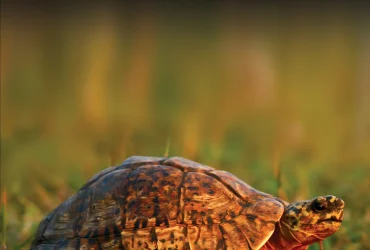 v3i1.42
v3i1.42ISSN: 1800-427X (print)
eISSN: 1800-427X (online)
DOI:10.47605/tapro.v3i1.42
Submitted date: 28 June 2011
Accepted date: 29 July 2011
Published date: 30 July 2011
Pp. 38–41.
MUGGER CROCODILE (Crocodylus palustris Lesson, 1831) PREYS ON A RADIATED TORTOISE IN SRI LANKA
Mahesh C. De Silva, A.A. Thasun Amarasinghe, Anslem de Silva & D. M. S. Suranjan Karunarathna*
*Corresponding author. E-mail: dmsameera@gmail.com
Abstract
The Mugger crocodile is the second largest crocodile in Sri Lanka. Recently we observed a Mugger attacking an unidentified radiated tortoise. The body morphology and colouration of this particular tortoise appeared different to the native Star tortoise widely distributed in the country. Thus, the possibility of an escaped or released exotic pet is discussed.
Key words : Sri Lanka, Crocodylus palustris, Geochelone elegans, Stigmochelys pardalis, feeding
Section Editor: John Rudge
eISSN: 1800-427X (online)
DOI:10.47605/tapro.v3i1.42
Submitted date: 28 June 2011
Accepted date: 29 July 2011
Published date: 30 July 2011
Pp. 38–41.
MUGGER CROCODILE (Crocodylus palustris Lesson, 1831) PREYS ON A RADIATED TORTOISE IN SRI LANKA
Mahesh C. De Silva, A.A. Thasun Amarasinghe, Anslem de Silva & D. M. S. Suranjan Karunarathna*
*Corresponding author. E-mail: dmsameera@gmail.com
Abstract
The Mugger crocodile is the second largest crocodile in Sri Lanka. Recently we observed a Mugger attacking an unidentified radiated tortoise. The body morphology and colouration of this particular tortoise appeared different to the native Star tortoise widely distributed in the country. Thus, the possibility of an escaped or released exotic pet is discussed.
Key words : Sri Lanka, Crocodylus palustris, Geochelone elegans, Stigmochelys pardalis, feeding
Section Editor: John Rudge
Hubungi Kami
The ultimate aim of the journal is to provide an effective medium for communication of the latest and best scientific information.
Copyright © 2020 Taprobanica. All Rights Reserved
Jasa Pembuatan Website by IKT




